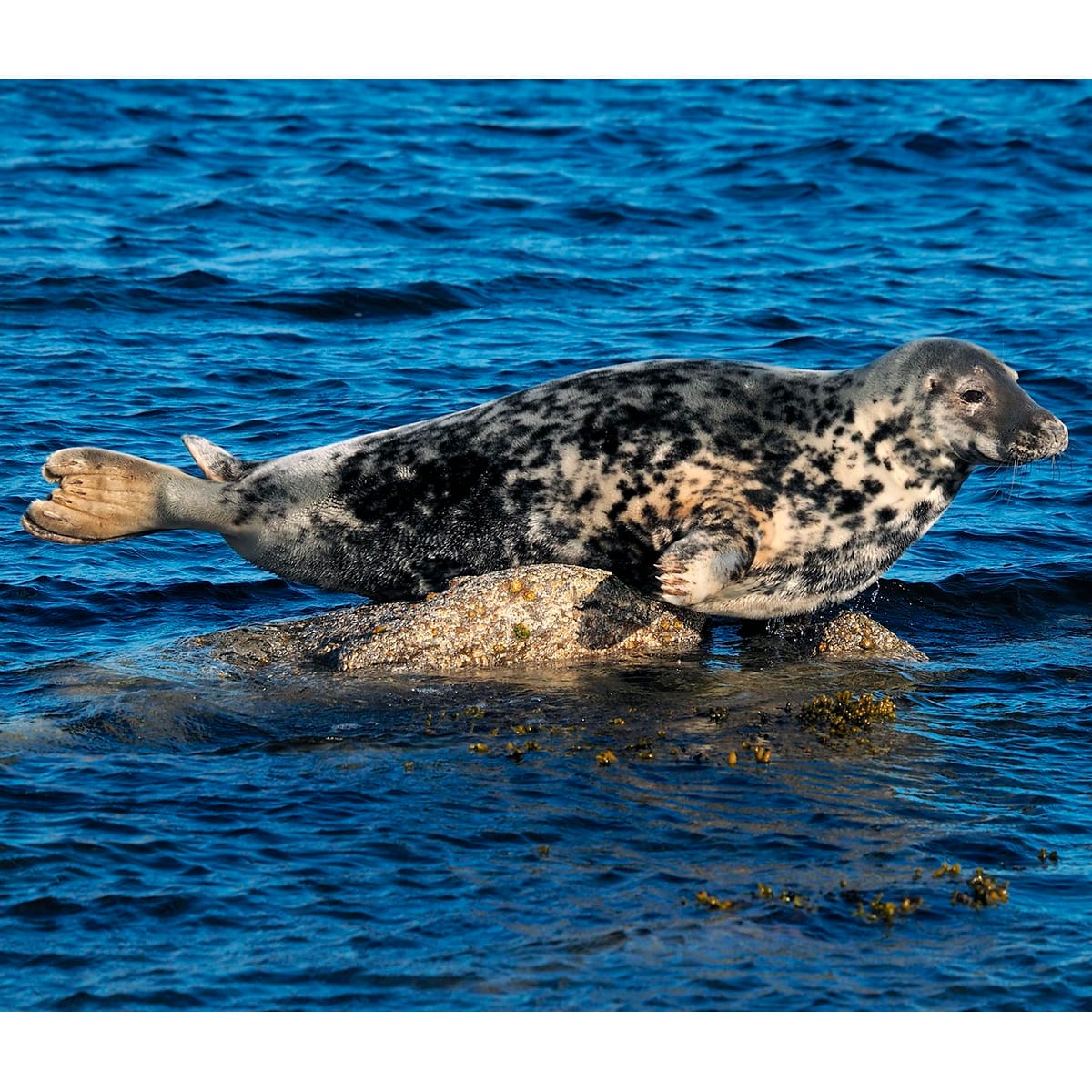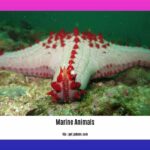Dive into the captivating world of grey seals, Halichoerus grypus, often called the “hook-nosed sea pig.” These majestic creatures, with their distinctive grey coats, roam the North Atlantic Ocean, captivating scientists and nature enthusiasts alike. Join us as we uncover the secrets of these fascinating marine mammals, from their playful antics to the important role they play in the ocean’s delicate balance. We’ll explore where they call home, what’s on their menu, and the challenges they face in an ever-changing world.
Decoding the Grey Seal: Size, Habitat, and Diet
The grey seal, Halichoerus grypus, is a captivating creature of the North Atlantic. Their most striking feature, aside from their impressive bulk, is the noticeable size difference between males and females (sexual dimorphism). Males can reach a staggering 2.3 meters (over 7.5 feet) and weigh over 300 kilograms (about the size of a small car!), while females average around 1.9 meters (about 6.2 feet). This size difference likely plays a role in their social structure and breeding behavior, a subject of ongoing research.
Grey seals favor the chilly waters of the North Atlantic, staying close to the coast where they hunt in the benthic zone (the seafloor and the area just above it). They often haul out on remote islands, secluded bays, and coastal caves—safe havens for breeding and resting away from predators and human disturbance. Key breeding colonies in the UK include Blakeney Point in Norfolk, Donna Nook in Lincolnshire, and the Farne Islands in Northumberland, offering valuable research opportunities.
These impressive predators aren’t picky eaters. Their diet includes a variety of fish and invertebrates, from sand eels and cod to squid and octopus. As apex predators, they play a crucial role in the marine ecosystem, regulating fish populations and maintaining the food web’s balance. Research into their diet provides valuable insights into the health of the marine environment.
Conservation Challenges: Protecting the Grey Seal
Like many marine animals, grey seals face numerous threats. Bycatch—accidental entanglement in fishing nets—is a major concern, often causing injury or death. Human disturbance from boat traffic and coastal development disrupts breeding and resting behaviors. Habitat encroachment further reduces their available space. Ongoing monitoring programs track populations, assess their health, and develop strategies to mitigate these threats.
Uncharted Waters: Future Research and Discoveries
Much remains to be discovered about grey seals. Scientists are investigating the potential impacts of climate change on their habitat and prey availability. Their incredible sensory abilities, especially their underwater hearing and vision, are another area of active research, potentially holding implications for human technologies.
| Feature | Description |
|---|---|
| Scientific Name | Halichoerus grypus |
| Common Names | Grey seal (US: Gray seal), Atlantic seal, horsehead seal |
| Size | Males: up to 2.3m, 300+ kg; Females: ~1.9m |
| Habitat | North Atlantic coastal waters, islands, bays, caves |
| Diet | Fish, invertebrates (e.g., sand eels, cod, squid, octopus) |
| Threats | Bycatch, human disturbance, habitat encroachment |
By studying and protecting these remarkable creatures, we ensure their survival and gain valuable insights into our oceans. The future of grey seal research holds exciting possibilities, unraveling further secrets of these enigmatic marine mammals.
Sharing the Water: Is it Safe to Swim with Grey Seals?
Grey seals are undoubtedly fascinating, but should we share their aquatic realm? While they’re not typically aggressive, swimming with them is generally not recommended. Their size and strength alone pose a risk; an accidental bump from a playful seal could cause injury.
Female seals are fiercely protective of their pups, especially during pupping season. Approaching them too closely might provoke a defensive response. It’s best to admire these families from afar. Furthermore, entering the water during hauling out, breeding, or molting could disrupt essential behaviors, causing stress. There’s also the risk of disease transmission, as seals can carry germs that may be harmful to humans. Some research suggests certain seal populations may carry antibiotic-resistant bacteria.
| Potential Risk | Explanation |
|---|---|
| Unintentional Injury | Accidental collisions due to size and strength. |
| Defensive Behavior | Protective mothers reacting to perceived threats near pups. |
| Behavioral Disruption | Disturbance during hauling out, breeding, or molting. |
| Disease Transmission | Risk of contracting diseases. |
Responsible wildlife viewing benefits both us and the animals. Using binoculars or a spotting scope provides a closer look without putting anyone at risk.
Understanding Grey Seal Behavior: Are They Aggressive?
Grey seals aren’t usually aggressive towards humans but can become defensive if threatened. Respecting their space is crucial. Maintaining a safe distance, especially during pupping season or hauling out, is essential. Avoid touching or harassing seals, keep dogs leashed, and refrain from feeding them. If encountering a seal up close, avoid sudden movements or loud noises. Back away slowly and give it space. If it displays aggression (hissing, barking, or charging), retreat calmly.
While attacks are rare, they can occur if a seal feels cornered. Some experts suggest territorial behavior, particularly during breeding season. Ongoing research continues to shed light on seal behavior and how to minimize negative interactions. Our understanding of animal behavior is always evolving. By respecting their boundaries, we contribute to a safer environment for both humans and these fascinating creatures.
A few simple guidelines for safe seal watching:
- Keep Your Distance: Stay at least 150 feet away (about half a football field).
- Hands Off: Never touch or pet a seal.
- Control Your Canine Companion: Keep dogs leashed and away from seal haul-out sites.
- Don’t Feed the Wildlife: Feeding disrupts natural behaviors and can lead to problems.
Mapping Grey Seal Territory: Where to Find Them in the UK
Grey seals are abundant around Scotland’s coasts and islands, particularly the Outer Hebrides and Orkney Islands. These locations offer abundant food and relatively undisturbed habitats. They are also found along the coasts of England and Wales, with notable colonies in the Isles of Scilly and Donna Nook in Lincolnshire.
Estimates from the early 2000s suggest a population of around 124,000 in Great Britain, though this can fluctuate due to factors like prey availability, environmental changes, and human activity. The Conservation of Seals Act 1970 and other legislation protect these animals in the UK.
Grey seals are a vital part of the marine food web, primarily consuming fish, squid, and crustaceans. They spend much of their time at sea but come ashore to rest and breed, often hauling out in large groups on beaches, rocky shores, or sandbanks.
Research suggests they may communicate using complex underwater vocalizations. Scientists continue to study their migration patterns and how they navigate their underwater world.
| Location | Abundance | Notes |
|---|---|---|
| Scotland (Outer Hebrides) | High | Major breeding site |
| Scotland (Orkney Islands) | High | Major breeding site |
| England (Isles of Scilly) | Significant | Important breeding site |
| England (Donna Nook) | Significant | Important breeding site, accessible for viewing |
| Wales | Present | Scattered populations |
| Other UK coastal areas | Likely present | Further investigation may reveal larger numbers |
Our understanding of grey seal populations and their behaviors is constantly evolving. Ongoing efforts track their movements, monitor their health, and understand the challenges they face. This information is crucial for developing effective conservation strategies.
For more information on diverse species and their unique characteristics, explore our articles on the hemerocampa leucostigma and the fascinating inachis io butterfly.
- Unveiling the Enigma: Mansoureh Khojasteh Bagherzadeh’s Public Appearances & Private Life in Iran - July 18, 2025
- Unveiling the Mystery: Mansoureh Khojasteh Bagherzadeh’s Husband: A Rare Glimpse into a Private Life - July 18, 2025
- Unveiling Masoud Khamenei’s Mother: Power, Influence, and Iran’s Future - July 18, 2025
















